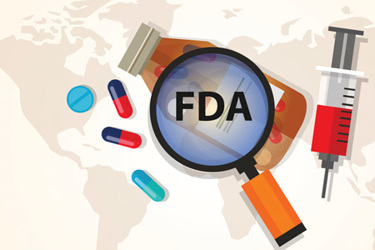These Are The Top Priorities & Challenges For New CDER Director Patrizia Cavazzoni, M.D.
By Lowell M. Zeta and Lynn Mehler, Hogan Lovells

Scientific breakthroughs have revolutionized the development of new and more personalized therapies to address unmet medical needs through enhanced technologies and data-informed capabilities. Advances in data infrastructure, clinical trial design, and other medical product technologies and the 21st Century Cures Act and other legislation aim to bring new innovations to patients who need them faster. These developments are requiring the FDA to rethink the ways it applies and interprets the law and to speed up its efforts to adopt innovative scientific approaches to inform regulatory decisions that make products more effective, safer, and available sooner.
FDA’s Center for Drug Center for Drug Evaluation and Research (CDER), under the leadership of Patrizia Cavazzoni, M.D., will continue to advance innovation in FDA’s regulatory pathways to allow critical medicines to reach patients earlier, especially when there is an unmet need and no alternative therapies, while ensuring that the drug center’s decisions are guided by science and available data and are consistent with the laws and regulations governing them. The FDA is at a critical inflection point; it has gained experience from the benefits of expedited programs, data modernization, and innovative technologies to drive development, and these lessons will inform programmatic changes and other public health investments to keep up with advances in science and technology so the FDA continues to be recognized worldwide as the gold standard in drug development and review.
Recently appointed to the permanent CDER director role, Dr. Cavazzoni’s appointment was not unexpected, as she was recruited to join the FDA in 2018 from a senior industry role and served as acting CDER director at the start of the agency’s COVID-19 pandemic response. She is keenly aware of the FDA’s and CDER’s priorities through her leadership in the agency’s annual appropriation process and ongoing user fee negotiations, and she will continue to make meaningful progress around clinical trial innovation, harnessing real-world evidence (RWE) and patient-focused drug development. Her experience also suggests that future changes will be integrated through continued evolution – not a revolution – of FDA’s drug review policies.
Harnessing Regulatory Science While Retaining Public Trust
Given that Acting Commissioner of Food and Drugs Janet Woodcock, M.D., previously served as CDER director beginning in 1994 and for more than 20 years, it is unsurprising that stakeholders are watching closely to see whether CDER’s new era of leadership will result in drastic changes to drug review policies. Some have questioned whether new leadership would effectively manage challenges that may arise from restructuring CDER’s Office of New Drugs (OND) to create offices that align interrelated disease areas. For example, industry stakeholders have claimed the restructuring has resulted in review divisions taking on different personalities and willingness to work with industry, which could lead to varying standards of review and inconsistent decisions – and departing from the agency’s long-standing policy to institute best practices and consistency across review divisions.
The FDA is an organization that is always learning and innovating its public health infrastructure. Many of the perceived changes to CDER’s regulatory processes are more likely a reflection that FDA is at a turning point with respect to greater acceptance of innovative methods and technologies to drive development programs and is on the cusp of realizing the full potential of fit-for-purpose real-world data sets (RWD to advance medical product development and strengthen oversight of products across their life cycles. Like other seasoned senior FDA decision makers, Dr. Cavazzoni and her leadership team understand that when carrying out its public health mission, FDA’s decisions occasionally invite controversy and disagreement. Indeed, FDA encountered multiple challenges to its scientific integrity for difficult decisions made during the COVID-19 pandemic to protect the public health, such as testing policies and the evidentiary standard to authorize the emergency use of medical products, even when the understanding of the virus and the disease it caused was evolving.
A formidable challenge that Dr. Cavazzoni faces is advancing the agency’s work to promote innovation while ensuring safety, as well as maintaining the public’s confidence in its decision-making. As FDA leadership, including Dr. Cavazzoni, wrote in a USA Today op-ed in fall 2020 at the height of the COVID-19 pandemic, “Erosion of public trust will leave consumers and patients doubting our recommendations, less likely to enroll in clinical studies or to use FDA-regulated products when they should to maintain or improve their health.”
The spotlight is on Dr. Cavazzoni following the drug center’s June 7, 2021, approval of Aduhelm (aducanumab) for the treatment of Alzheimer’s disease using the accelerated approval pathway, which has roiled industry and the scientific community. FDA determined that approval was supported based on the surrogate endpoint of reduction of amyloid beta plaque in the brain. With the assumption that amyloid is an acceptable surrogate endpoint, the agency fit its decision within the accelerated approval paradigm. For the sake of transparency and in an apparent effort to respond to the uproar, Dr. Cavazzoni issued a written statement to explain the agency’s approval decision over concerns around the sufficiency of clinical data from internal review staff as well as advisory committee members. However, commentary one week later at the annual BIO meeting relating to reforming the drug center’s advisory committee program seems to have intensified conjecture around FDA lowering evidentiary standards and the implications across other therapeutic areas. Since the approval, FDA approved a change to the prescribing information for aducanumab to narrow its recommended use to patients with a milder form of the disease, Congressional investigations were launched, and Dr. Woodcock called for an HHS inspector general investigation into the drug approval.
What is noticeably absent from discussions around aducanumab over the last two months is FDA’s statutory authority and regulatory discretion to make this and similar decisions using the accelerated approval program. Since the program was created in 1992, FDA has approved more than 260 new drugs or biologics through the accelerated approval program. While the program broadly applies to all drug classes and is used across clinical divisions within FDA, it is most often used in oncology. Between 2010 and 2019, 84% of FDA’s accelerated approvals were granted for oncology indications. As treatments become more highly targeted to smaller populations or subsets of diseases, and advances in personalized medicine continue, traditional methods to measure benefit will become increasingly difficult. The agency has gained important experience with the accelerated approval pathway in oncology, and the drug center, with Dr. Cavazzoni at the helm, appears to be applying lessons learned to other therapeutic areas, namely Alzheimer's disease.
Real-World Data And Real-World Evidence
Informed by FDA’s budget request seeking $6.5 billion in funding for FY2022, an overall increase of $477 million (8%) over the agency’s FY2021 budget, and ongoing negotiations for Prescription Drug User Fee Act (PDUFA) reauthorization, Dr. Cavazzoni and the drug center are expected to double the effort on key issues around RWD and RWE in regulatory decision-making, including statistical approaches, data standards, patient experience data, as well as significant investments in programs and data infrastructure to strengthen the agency’s drug review and surveillance capabilities. One of her first steps included tapping Jacqueline Corrigan-Curay as CDER’s principal deputy center director to help lead these efforts, after serving as director of the Office of Medical Policy and leading the drug center’s RWD/RWE initiatives since the Framework for FDA’s RWE Program was issued in December 2018.
In carrying out these priorities, we can expect that Dr. Cavazzoni will face similar challenges to initiatives advancing the use of RWD/RWE in drug development and approval decisions. Dr. Cavazzoni can be expected to lead CDER to build on progress to use RWE to monitor and evaluate post-market safety of drugs and to support effectiveness in oncology and rare diseases. With significant pushing from industry, FDA is acknowledging that there are ways to develop data to support regulatory decisions beyond a randomized controlled trial with a clinical endpoint. While single-arm trials may provide important safety and efficacy information and may be relied on for regulatory decisions, RWE may provide additional context and supplementary evidence. For example, RWE was used as supportive evidence for FDA’s 2017 approval of Bavencio (avelumab) for Merkel cell carcinoma under accelerated approval and, more recently, RWD was submitted in support of a label expansion for Ibrance (palbociclib) to include men with advanced or metastatic breast cancer.
With Dr. Cavazzoni’s leadership, CDER will continue to expand the use of patient experience data in regulatory decision-making. RWE can be used in the post-market setting to support confirmation of benefit through real-world data sets that reflect more diverse patient subpopulations than in traditional clinical trials and can be applied across multiple use cases, e.g., assessing endpoint measures, comparative effectiveness research, and studying long-term drug safety.
Integrating Best Practices From FDA’s Oncology Center Of Excellence’s Experiences
Industry is closely following whether ongoing Prescription Drug User Fee Act (PDUFA) negotiations will lead to broader integration of best practices and learnings from FDA’s Oncology Center of Excellence (OCE) experience in the review offices/divisions for other therapeutic areas within CDER and FDA’s Center for Biologics Evaluation and Research (CBER). For example, FDA and industry appear to be interested in expanding the Split Real-Time Application Review (STAR), currently available for oncology therapeutics, into all therapeutic areas to speed up review times for supplements.
The OCE is intended to advance precision medicine by streamlining the development and approval of new oncology therapies through cross-agency engagement among the scientific and technical oncology experts in the agency’s medical product centers (CDER, CBER, CDRH). While FDA has focused tremendous effort on the response to the COVID-19 pandemic this past year, and understandably so, OCE has been steadfast in its commitment to achieving patient-centered regulatory decision-making to accelerate access to new cancer treatments and devices through innovation. Overall in 2020, there were a total of 40 new indications and 19 new molecular entities (NMEs) that were approved for oncology indications.
While maintaining scientific rigor in the review of marketing applications, innovative programs such as the Real-Time Oncology Review (RTOR) program aim to bring novel cancer therapies to patients more quickly than FDA’s traditional review process. Launched in 2019, RTOR facilitates earlier submission of topline results and data sets to support an earlier start to the FDA application review. In addition, the submission of CMC and facility information and proposed labeling is frontloaded during the process, which may help sponsors to avoid delays between FDA approval and launch. The program has had profound results. From February 2018 to April 2020, FDA approved 20 oncology applications under RTOR (two were NMEs and 18 were product supplements). FDA received the bulk of the RTOR submissions almost six weeks prior to the full application submission. The median time from application submission to FDA approval was just over three months, which is significantly shorter than the PDUFA goals for priority review (six months) and standard review (10 months).
While some in industry have expressed an interest in FDA’s expansion of real-time reviews, Dr. Cavazzoni is unlikely to prioritize any immediate major programmatic changes to the drug review process. In the near term, she is more likely to focus on the drug center’s recovery out of the pandemic, retaining talent, and regaining the public’s trust in the agency’s approval standards. Whether CDER eventually decides to implement real-time review programs for other therapeutic areas will be an area that drug and biotech developers will be watching closely.
Conclusion
As Dr. Cavazzoni continues to lead CDER through the pandemic, she and her leadership team are well-placed to continue meaningful progress evolving FDA’s regulatory programs and drug review policies by harnessing RWD/RWE, innovative technologies, and expedited regulatory pathways to support regulatory decisions even when the scientific picture is not complete. While the aducanumab decision has tested her ability to navigate controversial waters in the face of criticism, the measure of success will be based on her ability to lead CDER, including its workforce of almost 6,000 public health personnel, to adopt policies that incorporate innovative methods and technologies into drug development programs and regulatory decisions on safety and effectiveness.
About The Authors:
 Lowell Zeta serves as counsel at Hogan Lovells in the firm’s FDA and Life Sciences practices. Prior to rejoining the firm, he served as senior counselor to the FDA Commissioner, providing leadership on cross-cutting and high-priority initiatives promoting innovation and addressing public health issues. He is based in Washington DC and can be reached at lowell.zeta@hoganlovells.com.
Lowell Zeta serves as counsel at Hogan Lovells in the firm’s FDA and Life Sciences practices. Prior to rejoining the firm, he served as senior counselor to the FDA Commissioner, providing leadership on cross-cutting and high-priority initiatives promoting innovation and addressing public health issues. He is based in Washington DC and can be reached at lowell.zeta@hoganlovells.com.
 Lynn Mehler is the co-head of Hogan Lovells’ Life Sciences & Health Care industry sector and a partner in the firm’s Pharmaceutical and Biotechnology practice. She advises clients on a wide range of FDA and DEA regulatory matters. She is based in Washington DC and can be reached at lynn.mehler@hoganlovells.com.
Lynn Mehler is the co-head of Hogan Lovells’ Life Sciences & Health Care industry sector and a partner in the firm’s Pharmaceutical and Biotechnology practice. She advises clients on a wide range of FDA and DEA regulatory matters. She is based in Washington DC and can be reached at lynn.mehler@hoganlovells.com.
